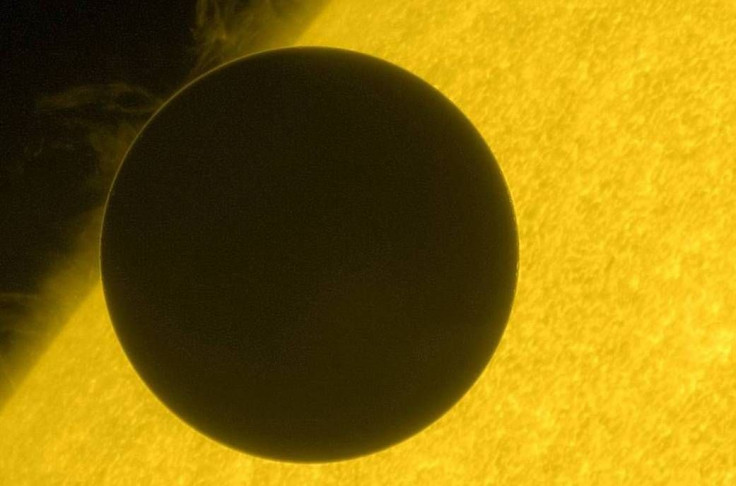Ancient Venus May Have Been Habitable, Likely Had Liquid-Water Ocean

In its early days, Venus was likely a very different place than it is today — different enough to even have a shallow liquid-water ocean and habitable surface temperatures, a new study suggests.
The study, published in the journal Geophysical Research Letters on Thursday, was based on a computer modeling of the planet’s ancient climate by scientists at NASA’s Goddard Institute for Space Studies (GISS) in New York. Scientists said that the modeling was similar to the type used to forecast future climate change on Earth.
The present-day Venus has very harsh conditions with a carbon dioxide atmosphere 90 times as thick as Earth’s. Being the second planet from the sun, it receives far more sunlight than our planet and has almost no water vapor in its atmosphere. Since Venus is believed to have formed out of ingredients similar to Earth’s, but later followed a different evolutionary path, the new study — which focuses on the planet’s topography and orbital parameters — suggests that a hospitable Venus possibly existed billions of years ago.
Previous observations based on NASA’s Pioneer mission to Venus in the 1980s suggested that the planet originally may have had an ocean. But, due to its close proximity to the sun, its early ocean likely evaporated, its water-vapor molecules were broken apart by ultraviolet radiation and hydrogen escaped to space. As a result, carbon dioxide built up in the atmosphere, eventually leading to Venus’ current conditions.
It was assumed until recently that a thick atmosphere like that of modern Venus was responsible for the planet’s slow rotation rate — a day on Venus is equivalent to 117 Earth days. However, the study has shown that a thin Earth-like atmosphere could have also produced the same result, meaning a young livable Venus could have had the same rotation rate it has today.
As part of the study, the GISS team also analyzed Venus’ topography and suggested that the planet once had more dry land overall than Earth, limiting the amount of water evaporated from the oceans and the greenhouse effect by water vapor.

“This type of surface appears ideal for making a planet habitable; there seems to have been enough water to support abundant life, with sufficient land to reduce the planet’s sensitivity to changes from incoming sunlight,” NASA said in a statement.
According to the researchers, they created a suite of 3-D climate simulations using topographic data from NASA’s Magellan mission in the 1990s, present-day Venus orbital parameters and an atmospheric composition estimated for early Venus. They also factored in an ancient sun that was up to 30 percent dimmer.
“At its current rotation period, Venus's climate could have remained habitable until at least 715 million years ago,” researchers said in the study. “These results demonstrate the role rotation and topography play in understanding the climatic history of Venus-like exoplanets discovered in the present epoch.”
© Copyright IBTimes 2024. All rights reserved.






















